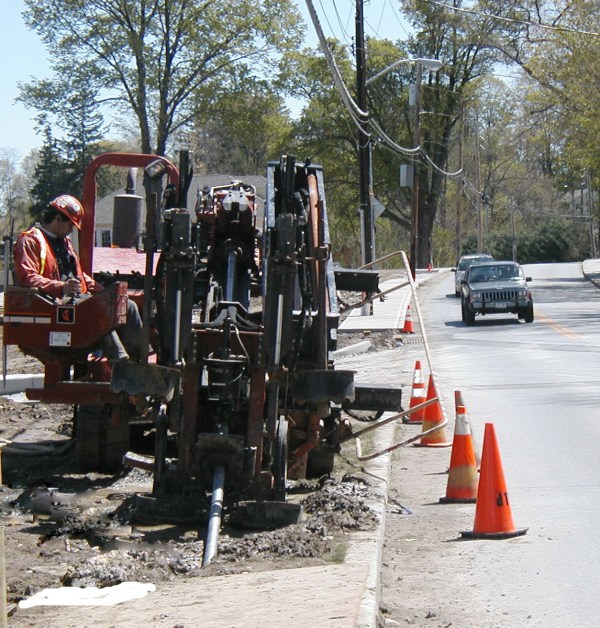
As a result, the increased volatilization significantly reduces dissolved-phase groundwater contamination, bringing sites to closure faster and keeping clients happy.
If you’re using air sparging techniques to target groundwater contamination, do you want more screen contact with the contamination, or less? If the goal is to achieve site closure in a shorter amount of time, then more screen contact is necessary. While vertical wells typically contain 10s of feet of screen, horizontal wells often contain hundreds of feet or more. This is particularly useful in air sparging situations because groundwater plumes are almost always more extensive in the lateral direction than the vertical. It makes sense, then, to install a horizontal well that is parallel to the geometric orientation of the groundwater plume rather than perpendicular to it.
Horizontal air sparge wells are particularly useful in situations where the contamination resides beneath an existing structure. It is common for volatile organic carbon (VOC) contamination to exist in places where traditional vertical techniques have difficulty reaching, such as beneath fuel storage tanks or dry cleaners.
The inability to access source area contamination can keep sites open for years beyond their scheduled timeline. In these situations, the horizontal well can be installed beneath the building or obstruction, targeting the contaminated groundwater with increased volumes of airflow.
While horizontal wells are an excellent technology for providing access to difficult locations, they also function as excellent sparge barrier wells in areas where access is not an issue at all. Typical vertical barriers may require several tens of wells in a row, relying on preferential pathways to provide remedial communication between them. One horizontal well with hundreds of feet of screen can replace an entire row of vertical barrier wells. The increased oxygen delivered via the horizontal air sparge remediation well will enhance the biodegradation process.
Horizontal air sparge wells provide significantly more oxygen to the contaminated groundwater due to increased screen footage and compatible orientation. One horizontal well may replace the proposed vertical system at your next site, while providing a higher performance and reducing the remedial timeline.
77 N. Plains Industrial Road
Wallingford, CT 06492
Over 5,000 Horizontal Remediation Wells Installed Worldwide
NAICS Codes: 237990 Heavy Equipment & Horizontal Drilling • 237110 Water & Sewer Line and Related • 541620 Environmental Consulting Services for HRW Screen Design • 237130 Underground Cable Lying & Utility Line Construction
Copyright 2025 Directional Technologies, Inc. All Rights Reserved.